The glory days of hacienda living are today just an intriguing piece of Mexico’s history. For the newly-arrived Spanish nobles it was a time of great wealth and great expectations that began with their arrival in Mexico in 1524, until the slow demise of the grand estates following the Mexican Revolution of 1910. This land, christened New Spain by the invaders, was commonly obtained by Spanish nobles through grants from the Crown.
The haciendas flourished as autonomous, self-governing worlds unto themselves and hacienda life typically included their own parish church, a school, a post office and a railway. All facets of hacienda life were overseen by the owners, including the indigenous people who worked tirelessly for their patrón, taming and harvesting the land.
The hacendados’ (owners’) holdings were huge and included thousands of acres of crops of wheat, sugar, fruit, vegetables and livestock. In some parts of the country, depending on the climate and the soil conditions, the land was given over to mining, and other estates like Hacienda Jaral de Berrio (obtained through a land grant in 1613), became known for manufacturing both gunpowder and mezcal.
Many of the old haciendas across Mexico have been refurbished and restored, particularly ones in the Yucatan, and operate now as luxurious hotels, conference centres and spas for the well-heeled traveller. Hacienda Jaral de Berrio is not one of these. Located in the municipality of San Felipe Torres Mochas in the north west area of the state of Guanajuato, Hacienda Jaral de Berrio stands as only a distant memory of those halcyon days, but its forsaken beauty is still reminiscent of another more resplendent time in rural Mexico’s history.
On approach, Hacienda Jaral de Berrio could easily be seen at first glance as an intact entity. With its two towers and central clock turret, its solid pink stone parapets and Corinthian columns that flank six doors and a central door, it indeed promises the traveller a glimpse into a secret world of days long gone. Although the doors all appear shuttered and locked, a group of young teens chatting together sense our interest and move toward us. After a few questions and an exchange of pesos, we are shown in and allowed to explore at our leisure.
The central courtyard is a grassy expanse with an old fountain in the centre, long since run dry; a few palms grow as tall as the towers, silhouetted now against an untroubled blue sky. Looking up to a long arched veranda, one can imagine standing in the courtyard of a plantation in America’s Deep South a century ago. The Mexican Ash trees have an almost gothic charm as they cascade over the peeling red paint of the faded wooden balustrades. Beneath the arched walkways, wooden barrels are stacked, presumably filled with the acclaimed mezcal.
As we enter the main building, wide stone stairs beneath a carved arch lead us to a second level and it is here that we gasp with delight. Over our heads, in the Spanish tiled roof, circled by a golden arch and cornices and held by Corinthian columns, the frescoed ceiling is painted with a blue sky filled with the fluffy clouds of a summer afternoon. Despite its derelict condition, the faded neoclassical splendour of the room is immediately evident in its double grand staircase, the elegant columns and cornices and the beautifully frescoed ceiling.
We wander down long hallways and through empty and dilapidated rooms (cautiously, as dangers abound in the broken floors and unexpected holes; some areas are roped off). Torn and broken wall decorations of peacocks and horses tell the story of a golden past. A glorious painting of what appears to be a nymph in the bath covers the entire wall of the now-crumbling and decayed bathroom. The tattered remains of French tapestries and wallpaper, likely inspired in a later refurbishing by the influence of Maximillian and his wife Carlotta who ruled Mexico in a brief period between 1864 and 1867, grace the walls and corridors.
As I stand, both in the present, and in the ruins of the past, I envision couples dancing, the women perfumed and coiffed in their exquisite gowns imported from Paris, the men, dashing iconic Spanish gentleman. I can almost hear the music of the orchestras of the day, the strains drifting out into the courtyards and the plaza where the Spanish nobles arrive in horse-drawn carriages.
Back on the main floor of the compound, another handful of pesos allows us into a part of the hacienda that appears to be newer than what we have seen. Further mysteries unfold as we climb stairways that lead to nowhere, some just slivers of stone worn thin from thousands of footfalls over the years. From the windows of some of these rooms, we look out into another courtyard and across to what appears to be a newer section of the hacienda. A fountain stands in its centre amid tall waving grasses. Windows in some of the stone buildings have the appearance of the barred windows in a monk’s cell and it isn’t hard to imagine monks chanting into the stillness of this simple yet magnificent setting. Apart from the birdsong and a soft breath of wind, there is only silence.
From the courtyard where we stand we look into the distance and see more ruins and it is here that the mezcal of today is purportedly made. According to promotional literature, a ‘smokeless’ mezcal, made from the salmiana agave, dried in stone conic ovens and stored in American White Oak barrels, is manufactured in the main compound of the hacienda. At an elevation of 2080 metres (6,824 feet), this semi-desert countryside is ideal for growing the maguey cactus from which mezcal comes.
Looking out through the arches of a long narrow hallway, across from the hacienda grounds, we see the plaza and the whitewashed parish church with its bell tower and smaller clock tower. (Our Lady of Mercy church was built in 1813). On the plaza, between the church – beribboned with yellow and white flags – and the hacienda, schoolchildren gather and a group of women laugh and chat together as they head toward the church, all carrying brooms, buckets and mops. To our right, behind the huge conic stone ovens stands what was once the family burial chapel. A burro pulling a simple wooden cart clip clops down the near-empty street.
In the late 19th century, 6,500 people were said to have lived within the hacienda compound. Today, according to a 2012 census, there are 2,308 people living in this village of Jaral de Berrio, in 425 households. One thousand and twenty of these are minors and 1,288 are adults. In terms of the hacienda’s ownership history, the available information is incomplete and often contradictory but it is known that Miguel de Berrio and Zaldívar, one of the first owner’s descendants, was given the Spanish noble title of Marquis by King Carlos 3rd in 1774. Noble titles were abolished in 1829.
As I leave the plaza and glance back at Hacienda Jaral de Berrio, it is not difficult to envision the estate as it stood in the splendour of its halcyon days. I feel like the poet Shelley’s ‘traveller from an antique land’ and like that traveller, I too have gazed upon a ‘shattered visage,’ yet it is still one of the classically beautiful remnants of old Mexico.
The trip from San Miguel de Allende to Jaral de Berrio took about 1 ½ hours. Take Route 51 all the way to San Felipe Torres Mochas. It is about 25k further to Hacienda Jaral de Berrio and the route is signed.

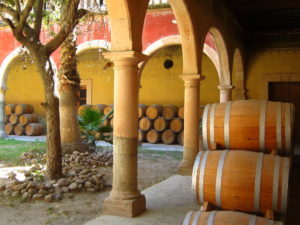
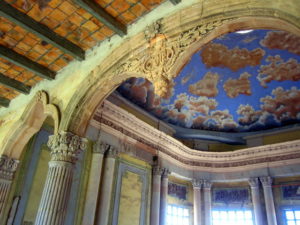
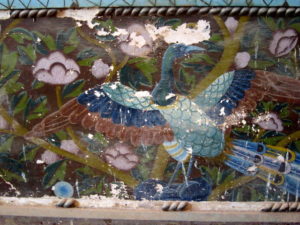
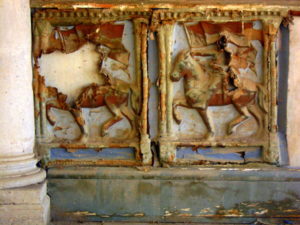
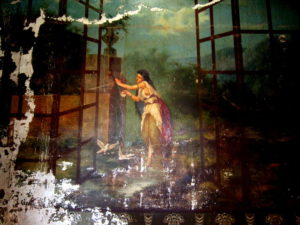
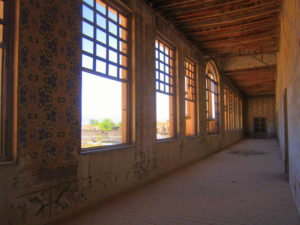
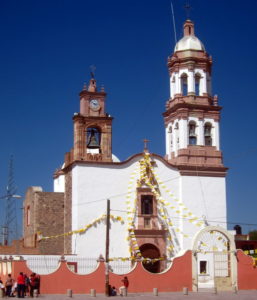
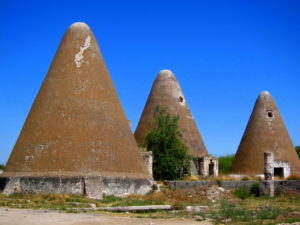
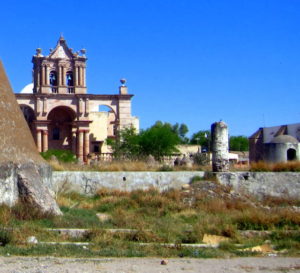
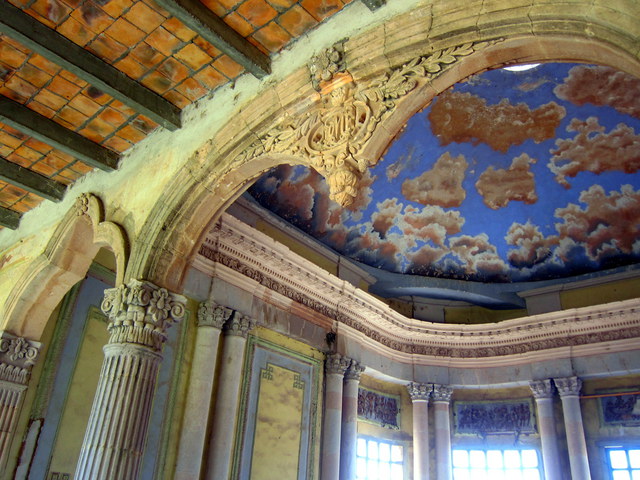
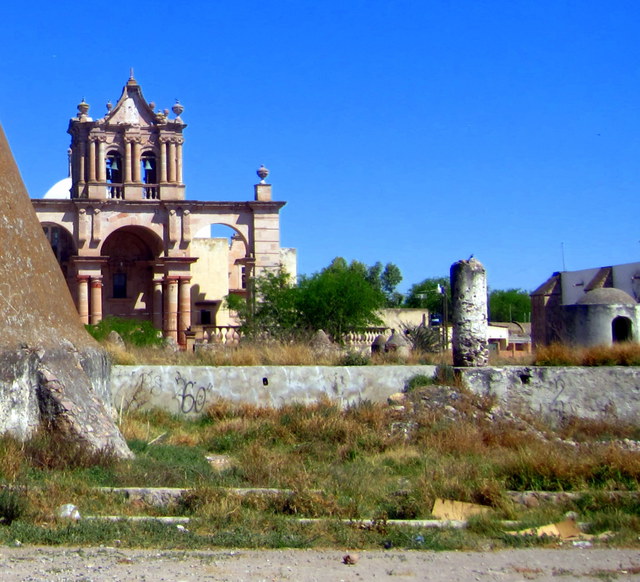

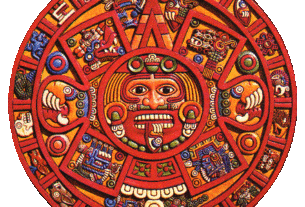

I am a descendant of Antonio Rojas De Moncada whom lived in the Hacienda of Jarral De Berrios; he was my great grandfather, my grandfather was born there too. I am researching and trying to trace their history.
Teresa,
My family is also descendant and shares the Moncada ancestry. As is known Juan Nepomuseno Conde de Jaral y de Berrio married several times. It will be interesting to connect and share some family names and data. Ancestry family members must have lived and shared “haciendas”. I am also researching and tracing family genealogy. I have been contacted by a Historian who has a spacial interest in this research. There is a book OPULENCIA Y DESGRACIA DEL LOS MARQUESES DE JARAL DE BERRIO edited by INHA (Instituto Nacional de Antropologia e Historia) that we are trying to find that can help us weave and understand the family tree and its complexity. My great grand mother was Juana Maria Espino Moncada and lived at “Hacienda del Carro” prior to the Mexican Revolution of 1910. My email: [email protected] if you are interested to connect.
Hello Manuel, forgive me for not replying sooner, lost track of site. I have heard of such book, have you been able to acquire the book?
My great grandfather was Antonio Rojas Moncada, he lived and worked at Hacienda del Jarsl de Berrios back in the 1800’s plus, he was a cochero natural of the hacienda. Him and his wife, Fernanda Herrera had 6 children, 3 girls and 3 boys. The youngest son, Pedro Moncada was my grandfather, married to my grandma whom raised me since the age of 2 and a half, her name was Julia Avila de Moncada. I have more history on them, so it would definitely be interesting to communicate with you. I hope this message gets to you. I will try your email.
I’m trying to connect with Manuel Cardona descendant of Juana Marua Espino Moncada researching Moncada ancestry.
I’m still searching for ancestors of Antonio Rojas Moncada from Hacienda del Jaral de Berrios. Am also in search of books regarding the history of this hacienda. Anyone out there?